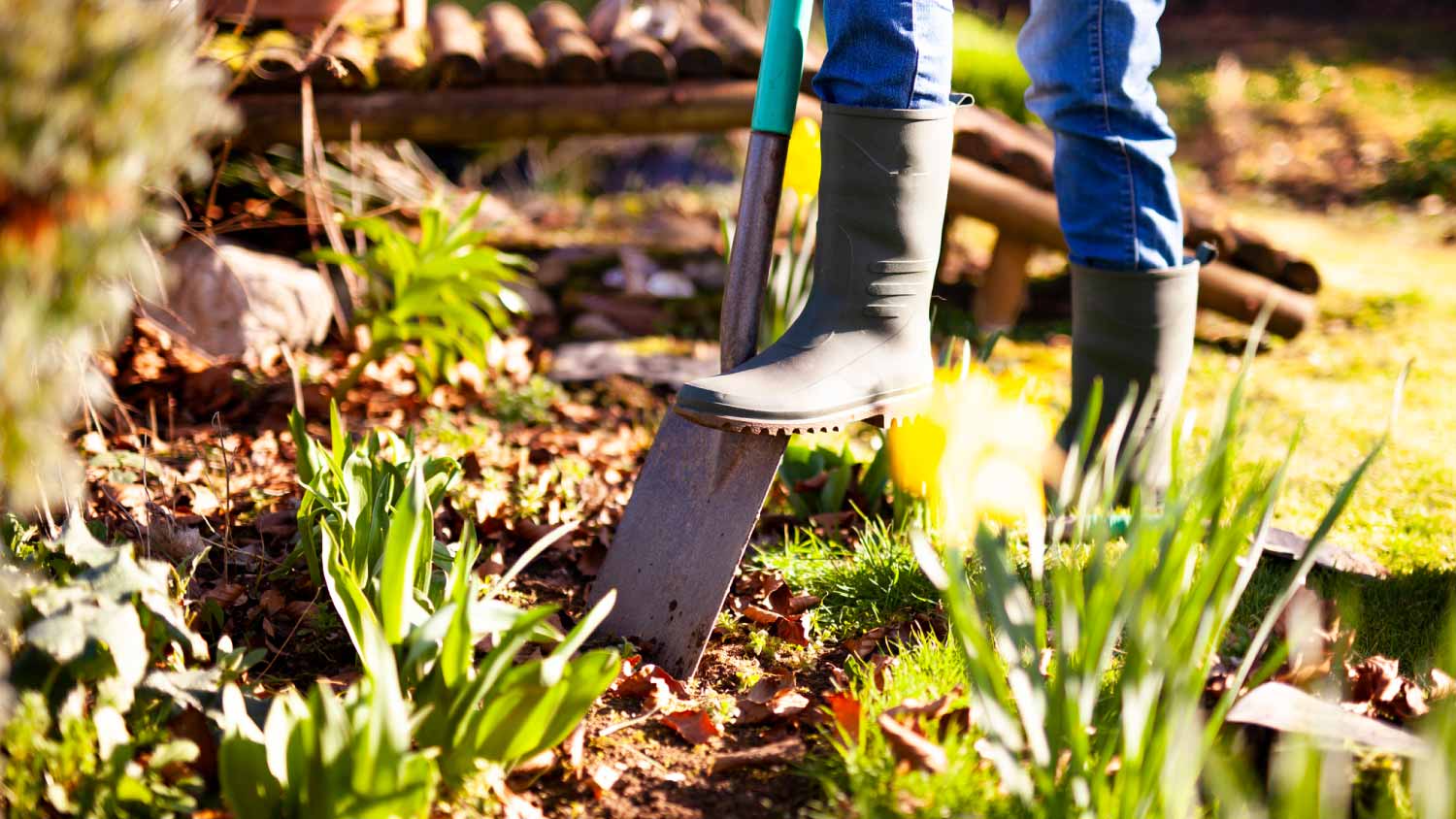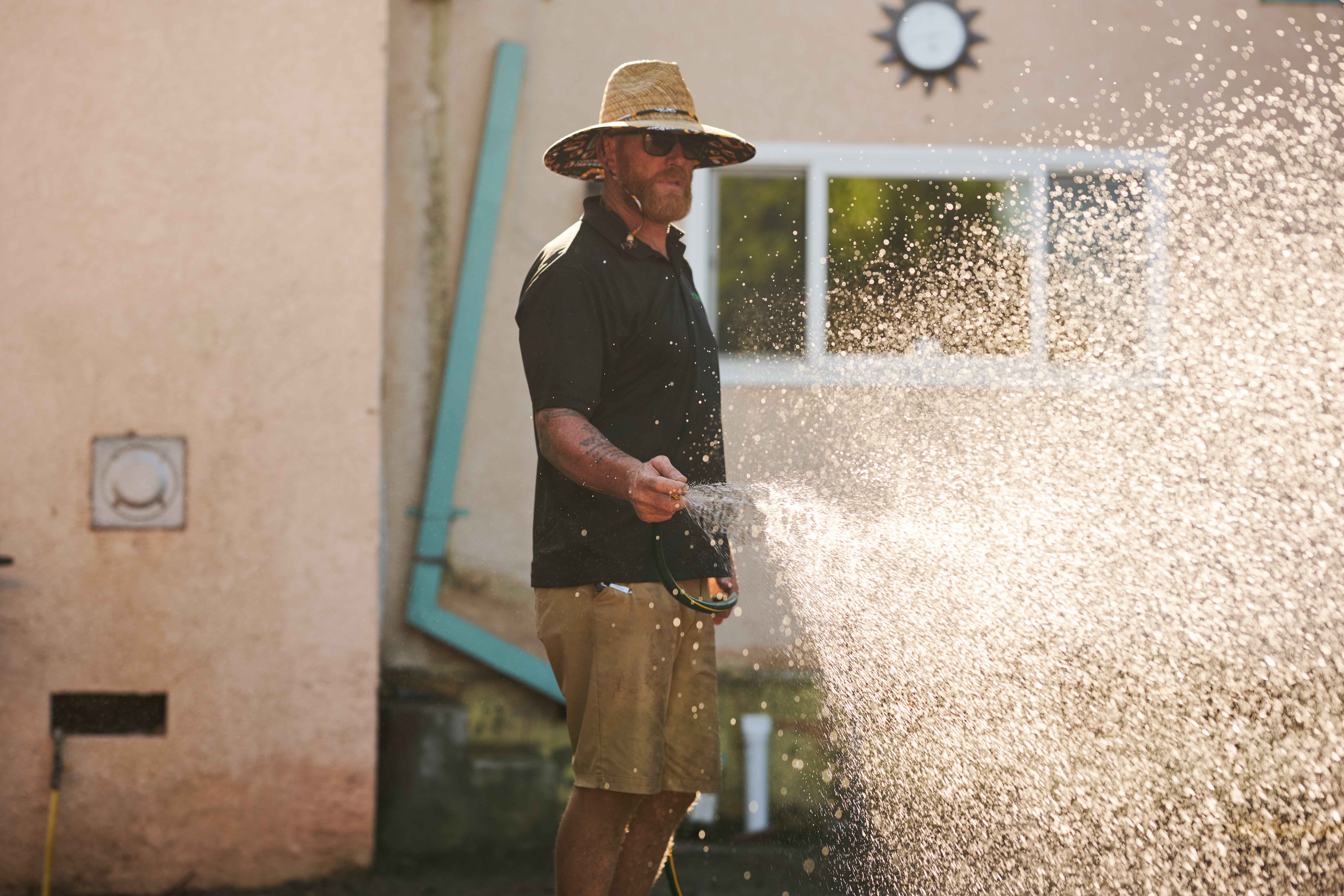
What are average sod installation prices? Learn how much sod costs based on factors like square footage, land prep, land condition, and more.
Small projects can make a big impact


Decide what you can spend comfortably, and then cater your landscaping ideas to that budget.
Focus your spending on hardscaping and high-value projects and DIY the rest to make your money go further.
Choose perennial plants and long-lasting hardscaping to save money on landscaping in future years.
Professional landscaping can transform a home and make it the envy of the entire neighborhood, but depending on where you’re starting, revamping your yard can cost thousands of dollars. Knowing how to budget for landscaping projects will help you maximize the value you get for your money and could yield similar results for less.
The first step in budgeting for landscaping is figuring out how much you can spend. Look at what you have saved and how much of that you can put toward redesigning your property.
It might be a good idea to consider your goals when setting a landscaping budget. If you’re not planning on moving and just want to improve the look of your home, then it’s a good idea to stick with what you can comfortably spend with the understanding that you might not recuperate any of the landscaping design cost.
If you’re planning on listing your home and relocating, it might actually benefit you to spend a little more on your landscaping budget, as curb appeal is one of the key things buyers look at when viewing your home. Projects that boost curb appeal can actually net you more than you spend in some cases, so if you’re relocating, going a little above what you’d otherwise do could be beneficial.
Next, you should get formal estimates for all the work you want done to see what your landscaping budget will cover but have your contractors itemize the work. If the quotes come out under or at your budget, then you can move forward, but if they’re above what you’re willing to spend, having an itemized estimate allows you to pick and choose the services you want.
If your quotes end up being higher than your budget, reconsider what you hire out for and try DIYing the rest. It’s a good idea to prioritize professional help for hardscaping—landscaping that requires a permit—like installing patios, walkways, and driveways. Softscaping tasks like mulching and planting flowers, bushes, and shrubs are much easier to DIY and save if the services don’t fit into your initial budget.

Understanding what your landscaping budget is likely to cover is a good place to start, as it allows you to prioritize the services you have done by a professional and figure out what you need to DIY, if anything.
The difference between a $50, $500, and $5,000 landscaping budget is pretty extreme, but knowing what your budget can cover is a crucial first step that helps you plan where to turn next. For example, if your budget doesn’t cover any softscaping ideas you have, then you might need to pull funds from your hardscaping budget to cover material costs so that you can DIY the rest.
Once you know what your budget will cover, you can adjust things to suit your budget. There are a few tips when planning your landscaping you can use to maximize the value you get from your budget:
Spend on hardscaping and DIY the softscaping. One way to make your money go further is to hire a professional landscaper near you to carry out the more challenging and permanent jobs, like installing walkways, driveways, and borders. You can then allocate the rest of your budget to materials for softscaping and do the work yourself to save on labor.
Find ways to save on materials. There are many ways to save on materials for landscaping projects, like waiting for end-of-season sales on plants, stones, pavers, and more from nurseries or home improvement stores. You can also check online marketplaces and community forums to save on both hardscaping and softscaping materials. This might extend how long your landscaping project takes to finish, but it can be worth it in the long run.
Minimize ongoing expenses. Finally, minimize your landscaping budget in future years by investing up front in things that will last. Choose walkway and border materials that will stand the test of time, like stone, brick, and concrete, rather than wood and plastic. Opt for perennial plants that will save you money on softscaping the following year.
From average costs to expert advice, get all the answers you need to get your job done.

What are average sod installation prices? Learn how much sod costs based on factors like square footage, land prep, land condition, and more.

A landscape designer can elevate your outdoor space and bring your vision to life. Use this landscape design cost guide to budget for your next project.
.jpg?impolicy=leadImage)
Landscaping your yard adds curb appeal and expands your home’s living space into the outdoors. Learn how much landscaping costs for various projects.

Hiring a pro isn’t necessary when removing holly bushes. This guide can help you make quick work of the holly bush removal process.

Looking to install synthetic grass for a putting green or play area? Learn what artificial turf questions you’ll need to discuss with your professional installer before you get started.

The right landscaper can transform your property. Learn how to hire a landscaper who will be the best fit for your landscaping project.